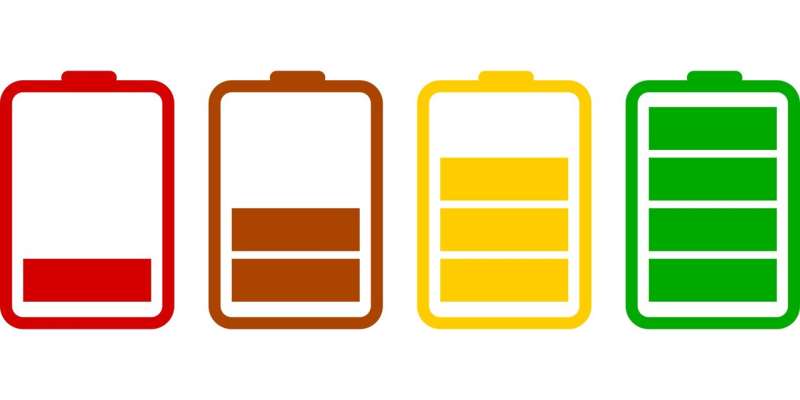Credit: CC0 Public Domain
The target of carbon-neutral and net-zero emissions is the development and utilization of renewable energy. High-energy-density energy storage systems are critical technologies for the integration of renewable energy.
Li metal is highly recognized as a promising alternative anode for next-generation rechargeable batteries due to its high theoretical capacity of 3860 mAh g-1 and ultralow electrode potential of -3.04 V compared to the standard hydrogen electrode.
However, Li metal batteries' (LMBs) main issue is their low Coulombic efficiency (CE), which limits batteries' cycle life. The low CE in LMBs occurs because active Li turns into inactive Li, comprising Li components in the solid-electrolyte interphase (SEI) and SEI-wrapped metallic Li (dead Li0). Dead Li0 is the primary reason inactive Li results in a low CE. Therefore, determining the formation and evolution of dead Li0 is essential to fundamentally enhance the CE for longer-lifespan LMBs.
Recently, a group led by Prof. Qiang Zhang from the Tsinghua University reported new insights into dead Li0 during LMB stripping. The dead Li0 directly forms during the stripping process because the partial metallic Li cannot immediately convert into Li+ but is wrapped by insulated SEI. The stripping processes involve the following stages: electron transfer in the solid phase and Li atom conversion to Li+ and Li+ diffusion through SEI.
During the subsequent 1st stripping process (Movie S1), the whole outline of Li deposition is almost constant with the morphology after 1st plating. Credit: Journal of Energy Chemistry
During the 2nd plating, the Li metal draws out from the root of origin electrode. Credit: DICP
They investigated the formation and evaluation of dead Li0 systematically and meticulously during the stripping process from electron transfer, the oxidation of Li0 into Li+, and the diffusion of Li+ through SEI. These processes were regulated by adjusting the contact sites of electron channels, the dynamic rate of conversion from Li0 to Li+, and the SEI structure and components. The design principles for achieving less dead Li0 and higher CE are proposed as a proof of concept in LMBs.
The behavior of the 2nd stripping step is similar to the 1st stripping step. Credit: DICP
"This work describes the comprehensive understanding of dead Li0 formation, providing guidance to reduce dead Li0 for developing future LMBs with higher CE," said Prof. Zhang.
The results were published in Journal of Energy Chemistry.
More information: Xiao-Ru Chen et al, New insights into "dead lithium" during stripping in lithium metal batteries, Journal of Energy Chemistry (2021). DOI: 10.1016/j.jechem.2021.03.048
Provided by Chinese Academy Sciences























